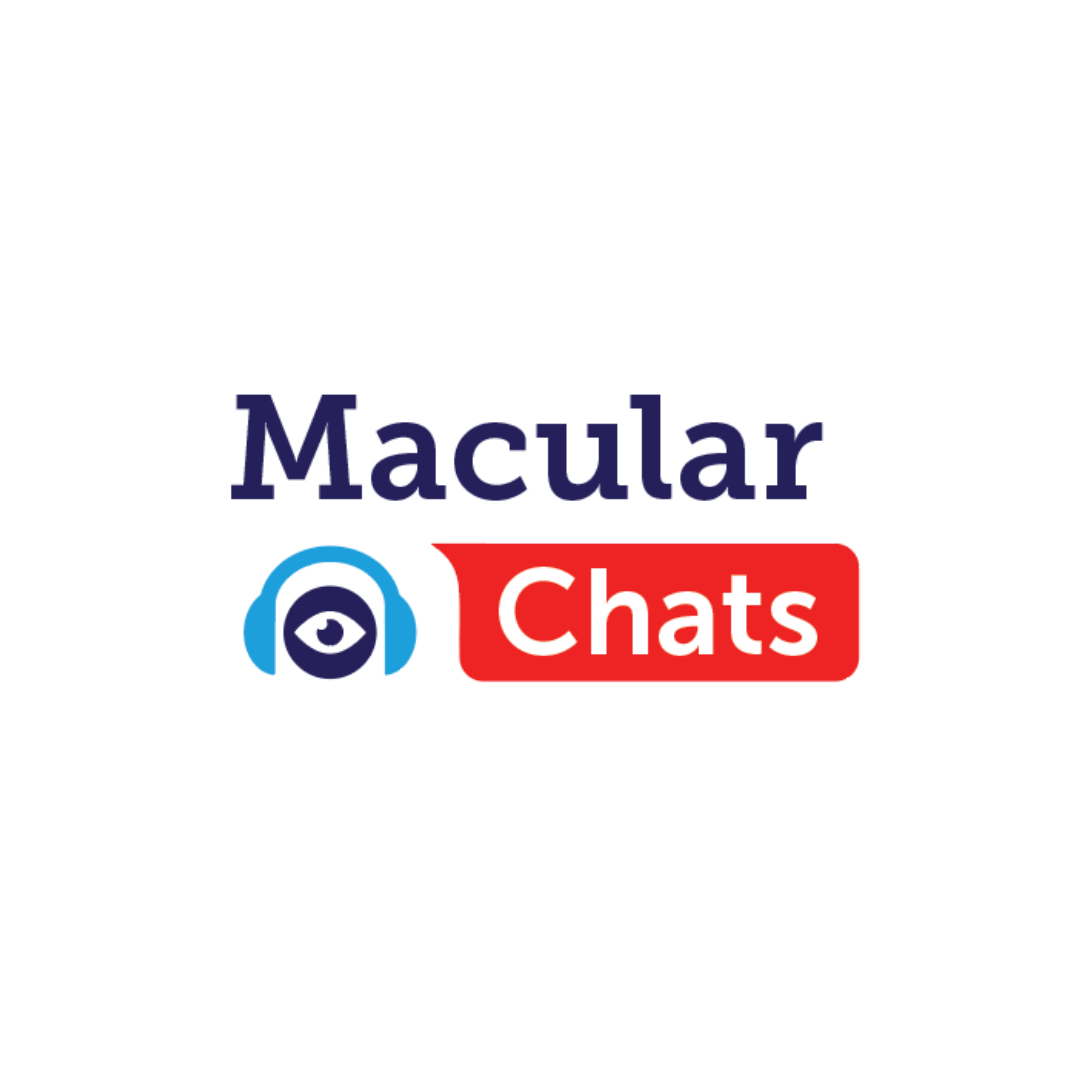
Did you know that certain types of macular degeneration can start in childhood? Stargardt disease, a rare inherited form of juvenile macular degeneration, impacts about 1 in 8,000 children and young adults.
Retina specialist Christine Kay, MD, joined BrightFocus Foundation’s Macular Chats series to answer commonly asked questions about Stargardt disease. Check out her answers below.
What is Stargardt disease? How is it different from age-related macular degeneration?
Dr. Kay: Stargardt disease is a genetically inherited retinal condition. Age-related macular degeneration (AMD) is a multifactorial disease, where genetic predisposition can be one component; however, age is still the number one risk factor.
AMD is not a monogenetic—meaning one gene causes the condition—type of disease. People with Stargardt disease develop a macular dystrophy, which actually looks very much like AMD; it just typically happens at a much younger age. Stargardt disease has a different progression and a little bit of a different appearance on clinical features than AMD.
While age-related macular degeneration typically affects individuals 60 years of age or above, Stargardt macular dystrophy typically is a juvenile-onset disease. A very common age is late childhood/ early adolescence for first visual symptoms
There is, however, a late-onset version of Stargardt disease. When I have a 35- or 40-year-old walk into my office who’s been diagnosed with AMD, I’m already a bit doubtful of that diagnosis, and that is where we start to think about other diagnoses.
Stargardt disease is typically inherited in an autosomal recessive fashion—meaning one mutation is inherited from Mom, and one mutation is inherited from Dad. Typically, the parents are carriers of the condition but do not manifest the actual disease. Once I’ve obtained a thorough clinical exam, evaluated the OCT image (picture of the back of the eye), and I’m pretty sure this is Stargardt disease, I then recommend genetic testing, which can be done using a blood sample or a saliva sample
What treatments are available for Stargardt disease?
Dr. Kay: Currently, we do not have an FDA-approved treatment yet for Stargardt disease. There are some important things that we tell patients to avoid, and other things we tell patients to consider that have potential to slow progression, like vitamins.
- Number one: avoid smoking. We know that smoking is very, very toxic to the retina for any macular disease, including macular degeneration. I tell my AMD patients this, as well. Same thing for Stargardt. If you already have a defect that’s hurting your retina, you don’t want to be smoking and causing more retinal cell loss.
- Number two: Vitamin A is the enemy (basically—but will caveat this later). That doesn’t mean that you can’t eat carrots! There are a lot of people that get really worried and nervous about this, and they want to try to limit everything in their diet, and that’s not the case. People can basically eat whatever they want, but we do tell them to avoid liver (very high in vitamin A) and any pills that have vitamin A.
Vitamin A is not exactly the enemy, in fact it’s a necessary part of the visual cycle. In Stargardt disease, due to a genetic defect in a gene called ABCA4, there is not a functional ABCA4 enzyme to get rid of the vitamin A-related byproducts of the visual cycle. You can’t deprive the eye of vitamin A, or you’ll go night blind and your retina will degenerate. But we want to help the eye get rid of the vitamin A byproducts that are created because the ABCA4 enzyme is not working correctly in patients with Stargardt disease.
Are there ongoing clinical trials for Stargardt disease treatments?
Dr. Kay: The first one that I’ll mention is a pharmaceutical company called Alkeus, and the product gildeuretinol, which is an oral drug. This is a modified form of vitamin A. The eye thinks it’s vitamin A, allowing the visual cycle to occur normally. But it significantly decreases the ability for vitamin A byproduct to bind to itself and form a toxic byproduct.
Alkeus has completed a clinical trial in patients with Stargardt disease and is moving forward in the regulatory pathway—and soon submitting a New Drug Application (NDA) submission—which is positive movement toward FDA approval.
There’s also an oral drug from Belite Bio that’s an RBP4 inhibitor. Imagine that you have a little truck that’s carrying your vitamin A through your bloodstream to your eye, and then you slow that truck down. That’s the idea of an RBP4 inhibitor— we’re decreasing systemically the ability for vitamin A to be delivered to the eye.
Belite Bio that is working on a study in the U.S., and they had an earlier ex-U.S. site that had some promising open label data—that means that all the patients were treated—and they are now focusing on a younger population for a randomized controlled trial in the US. I believe they are targeting patients 20 years old and below, so focusing on more of a pediatric population of patients and hoping to be able to intervene early to prevent disease acceleration.
The company Nanoscope Therapeutics has an optogenetics program for late stages patients in both Stargardt disease and for retinitis pigmentosa. This is a gene-agnostic therapy (meaning it doesn’t matter what the original gene defect is) and a restorative therapy (theoretically, if it works as intended, vision can be improved, not just stabilized).
Optogenetics is genetically re-engineering a cell to have a different capability than originally designed. The Nanoscope program optogenetics platform delivers an AAV gene therapy to engineer an inner retinal cell (called a bipolar cell) to start sensing light (to become more like a photoreceptor cell) in patients with end stage disease and severe vision loss. Participants in both disease programs had some improvement in their visual acuity and ability to navigate mazes and do shape discrimination tests.
How do I find local support groups in my area?
Dr. Kay: It’s important, especially with a new diagnosis, to consider ways to network into and find support groups.
Support groups such as Division of Blind Services will sit down with people and talk about job optimization, work resources, and sometimes even vocational rehabilitation, which means maybe this job is not best for me right now; what else can I be best suited for right now and helping to adapt? So, it’s all about adaptation and working with what we have and using technology to help us. You can also look in your phone book/Google networks and look up what resources are near you and, hopefully, talk to your ophthalmologist or optometrist.
What advice do you have for families, children, and young adults living with Stargardt disease?
Dr. Kay: You’re not alone. There are many people out there and many families out there that are at all different stages of processing this information. Some are newly diagnosed; some have lived with it their whole lives. Being able to share that journey and that pathway with another individual and embracing the humanity of this is so important. Being able to share that with another family or individual is so helpful and so important. So, I would say, is reaching out and networking.
Step one: Listen and educate yourself to what updates there are in the field.
Step two: Get genetic testing. If you have not had genetic testing offered to you, ask.
Step three: Stay up to date. There are new updates in this field every month!
Always maintain hope and adaptation—the human spirit and body are so amazing and able to adapt. I have patients who are athletes in Paralympics and Paralympians and patients with Stargardt who have authored books and climbed mountains and done amazing things. Nothing is out of reach.
Want to learn more? Listen to the full Macular Chats episode with Dr. Kay and register for upcoming episodes.
Responses have been edited for length and clarity.
About BrightFocus Foundation
BrightFocus Foundation is a premier global nonprofit funder of research to defeat Alzheimer’s, macular degeneration, and glaucoma. Through its flagship research programs — Alzheimer’s Disease Research, Macular Degeneration Research, and National Glaucoma Research— the Foundation has awarded nearly $300 million in groundbreaking research funding over the past 51 years and shares the latest research findings, expert information, and resources to empower the millions impacted by these devastating diseases. Learn more at brightfocus.org.
Disclaimer: The information provided here is a public service of BrightFocus Foundation and is not intended to constitute medical advice. Please consult your physician for personalized medical, dietary, and/or exercise advice. Any medications or supplements should only be taken under medical supervision. BrightFocus Foundation does not endorse any medical products or therapies.
- Disease Biology
- Eye Health
- Treatments










